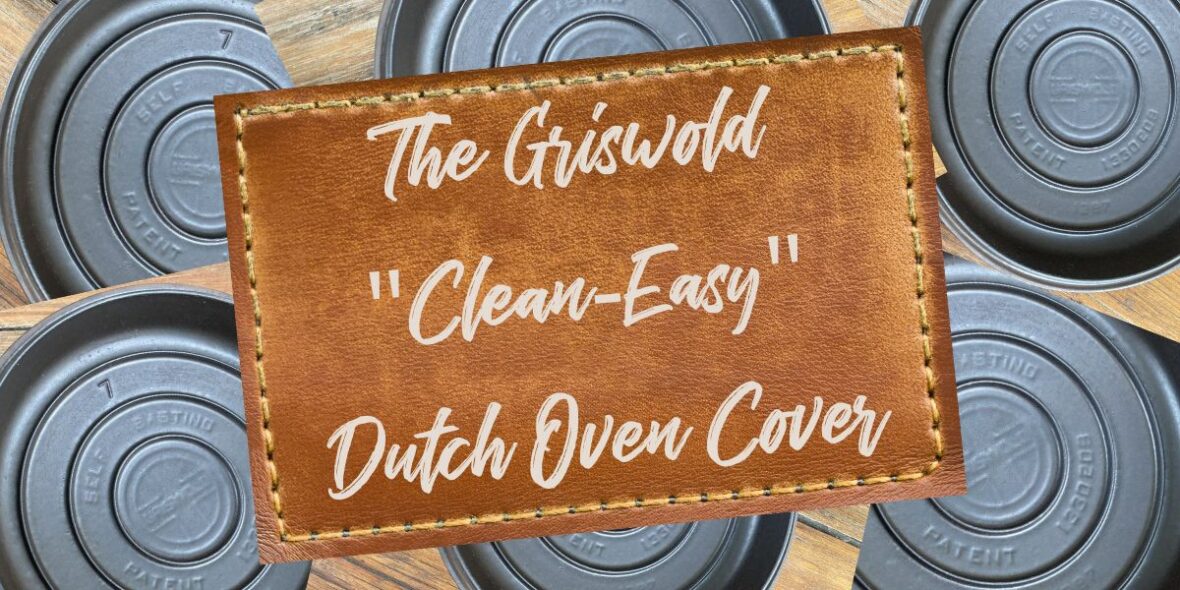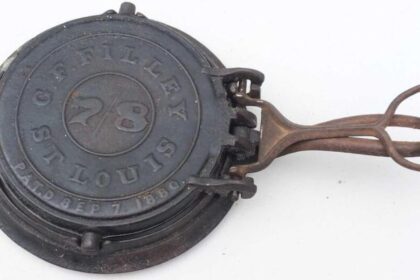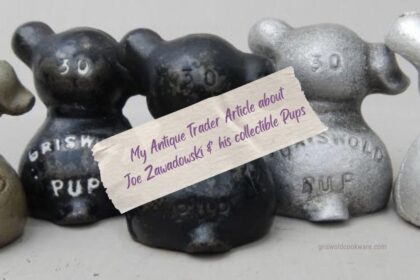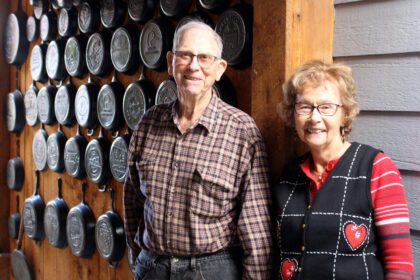The first time I came across a vintage Griswold cast iron “clean-easy” cover, I didn’t really know what I was looking at. What I saw was some kind of hard glossy thick coating adhered to the iron on the underside of a “plain” (i.e. no raised lettering on the top) small logo high-dome Griswold skillet cover. The coating was a dark grayish color that looked similar to an enamel coating.
What Does the Clean-Easy Cover Look Like?
Here is a photo of the underside of a Griswold “Clean-Easy” Dutch oven lid:
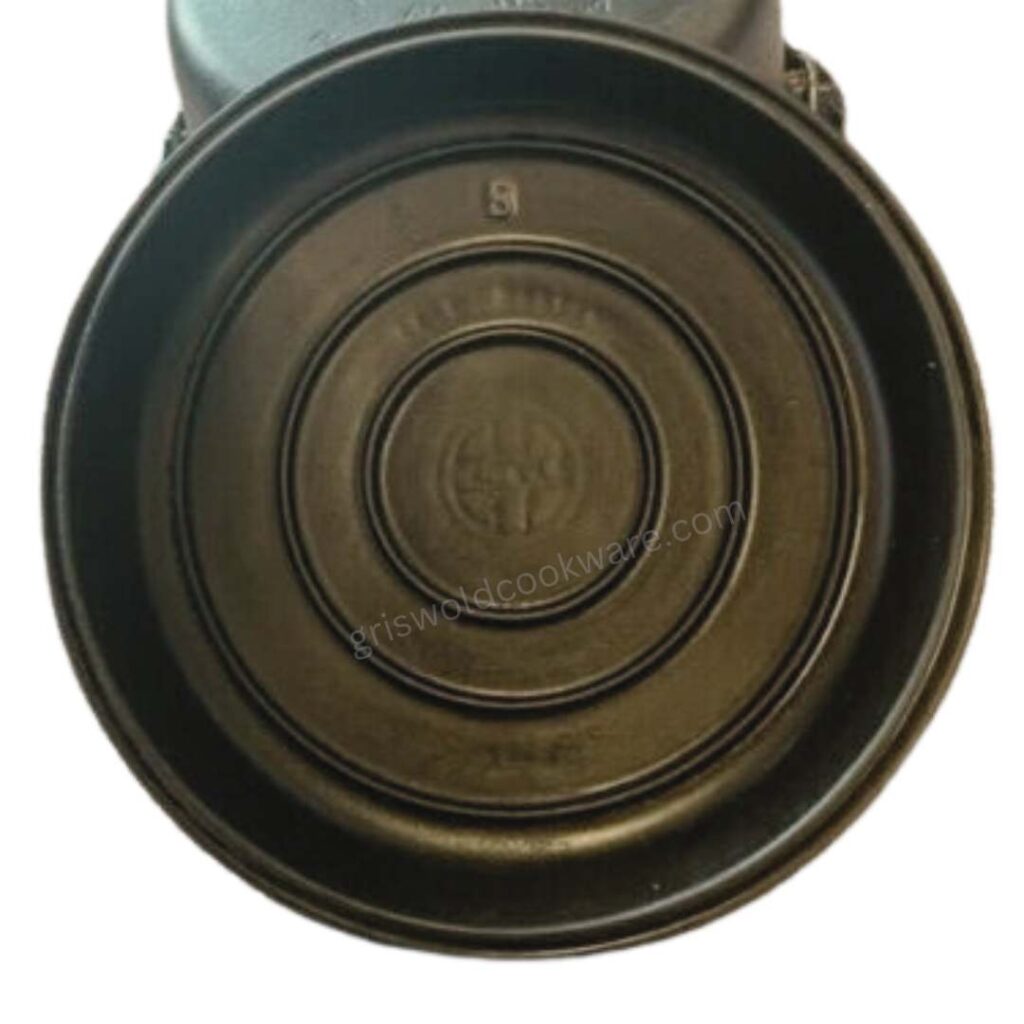
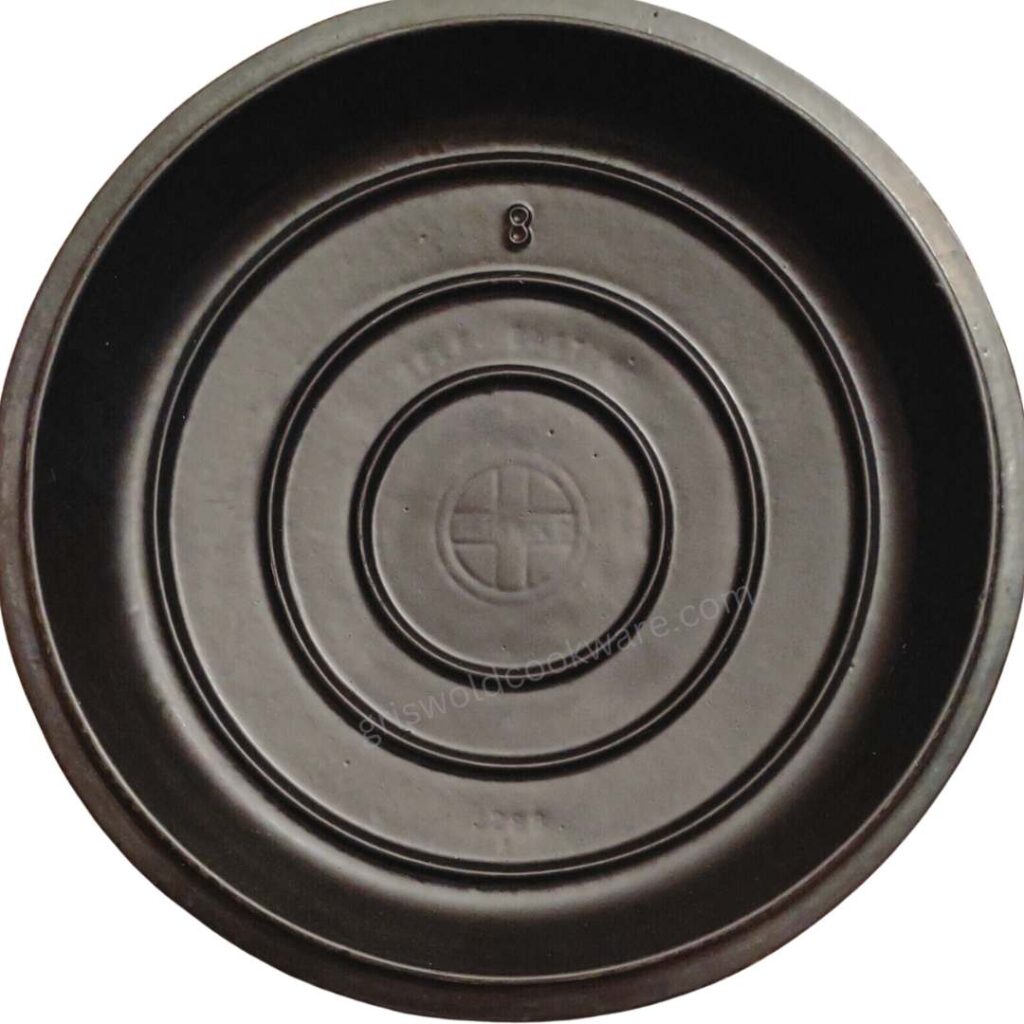
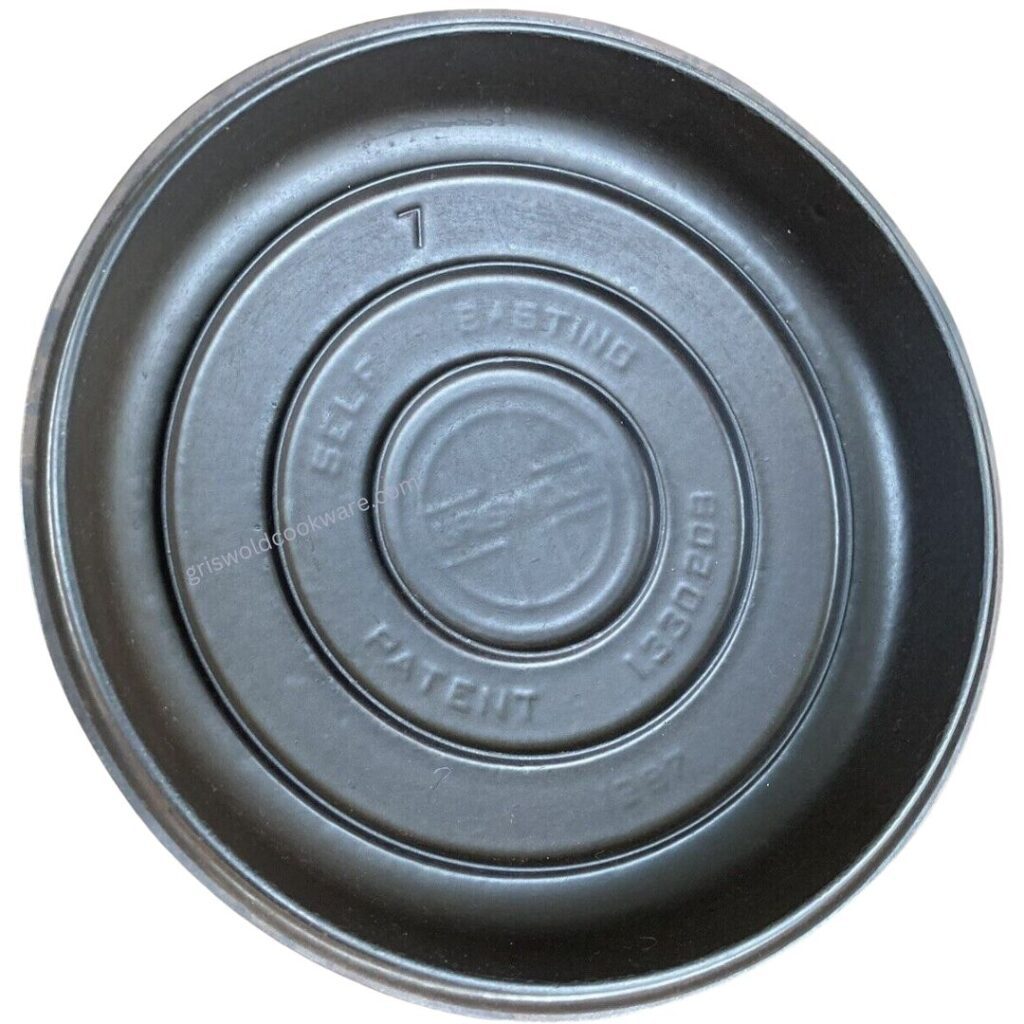
Compare the appearance of the “clean-easy” cover with that of a plain, uncoated Griswold Dutch oven cover:
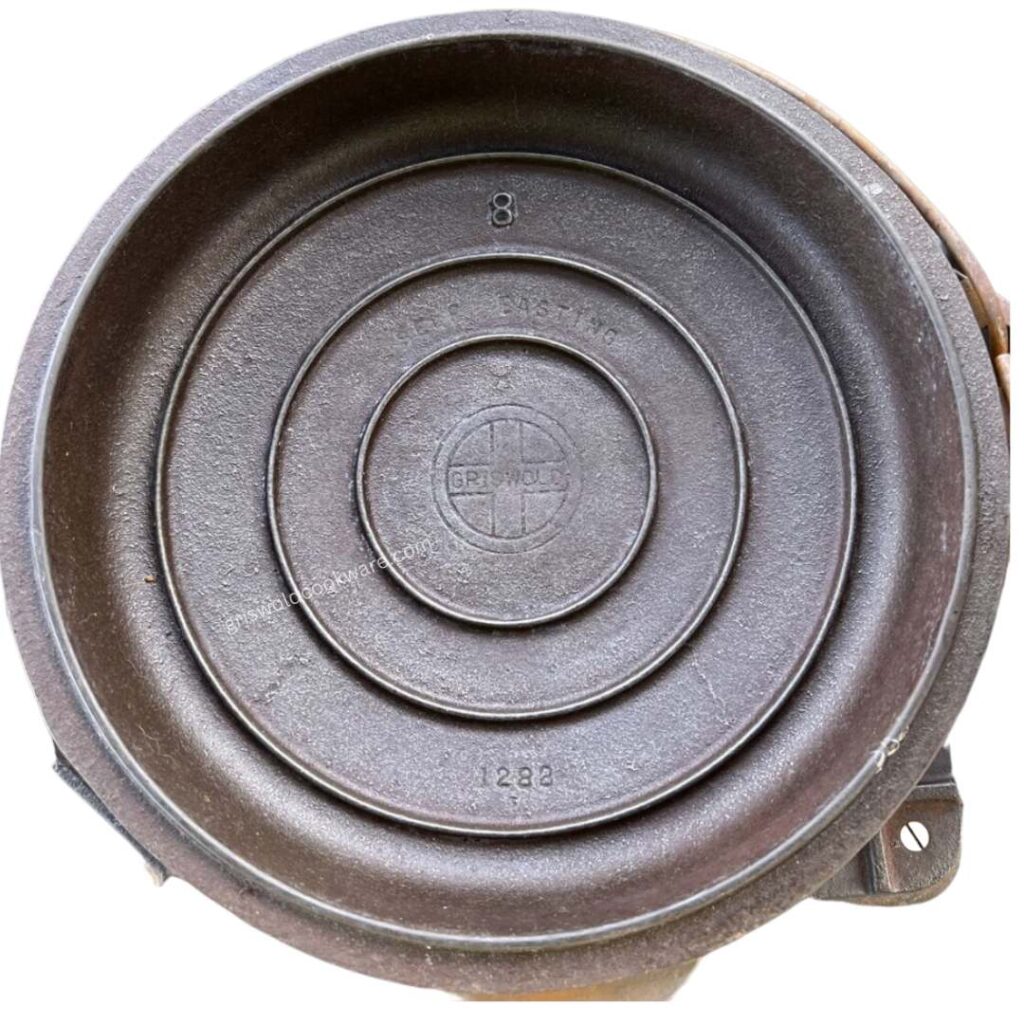
How the Griswold Clean-Easy Lid Was Offered
As is obvious from its name, the “clean-easy” lid was touted as being easy to clean and non-rust.
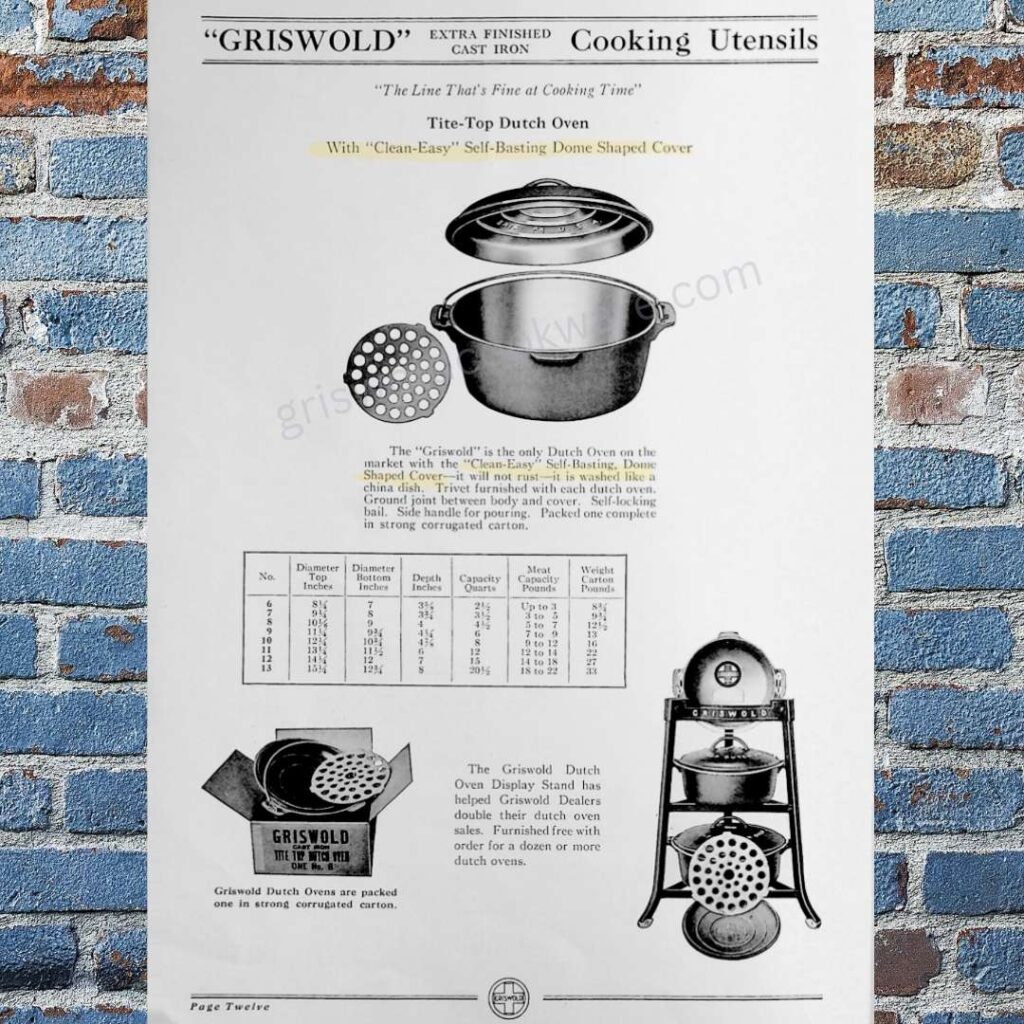
In my experience, the “clean-easy” cover is indeed easy to clean. While I personally prefer the aesthetics of the plain black iron cover, it admittedly can be a small bit of a hassle on occasion to clean around the self-basting rings – they can accumulate gunk and get a bit rusty if attention is not paid.
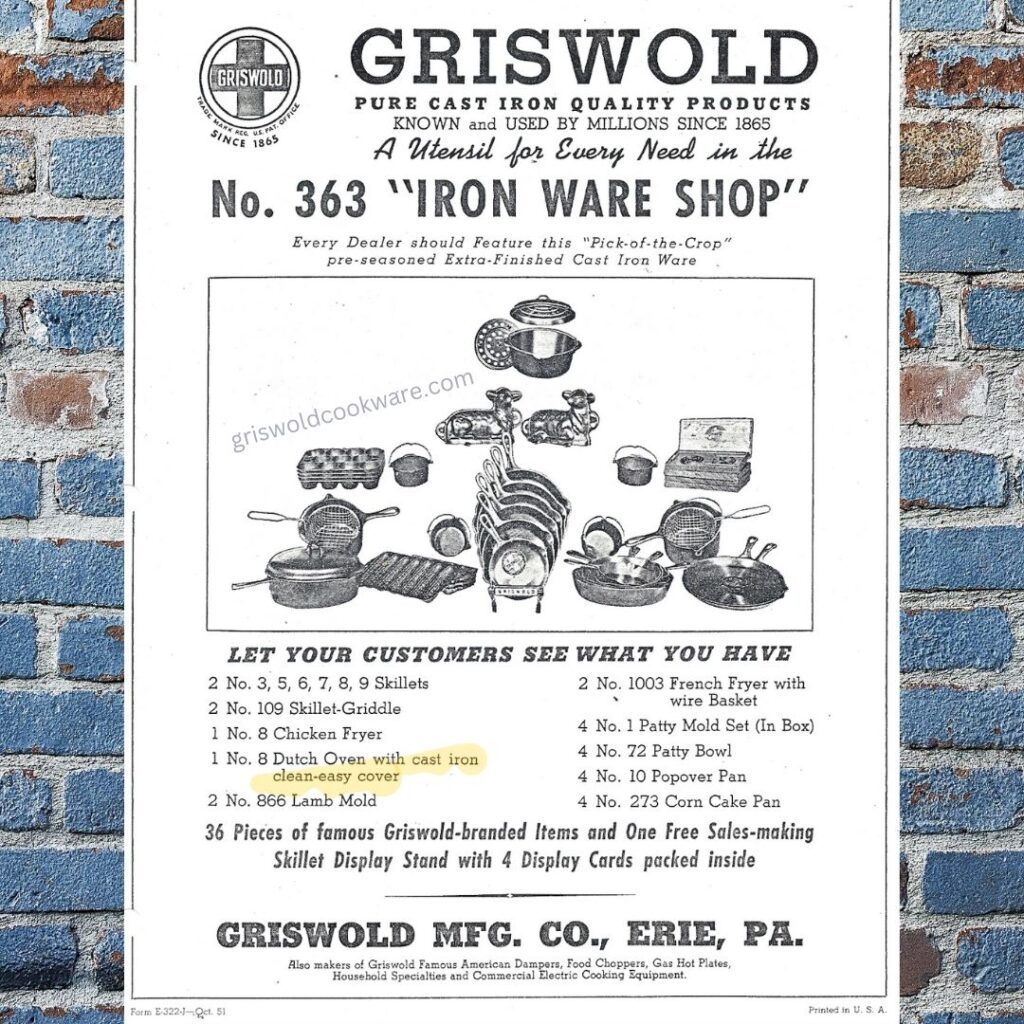
The Griswold Dutch ovens were ultimately offered with a choice of three different covers: the clean-easy, plain black iron dome, and Pyrex glass. The clean-easy was the most expensive, as you can see in the advertisement below.
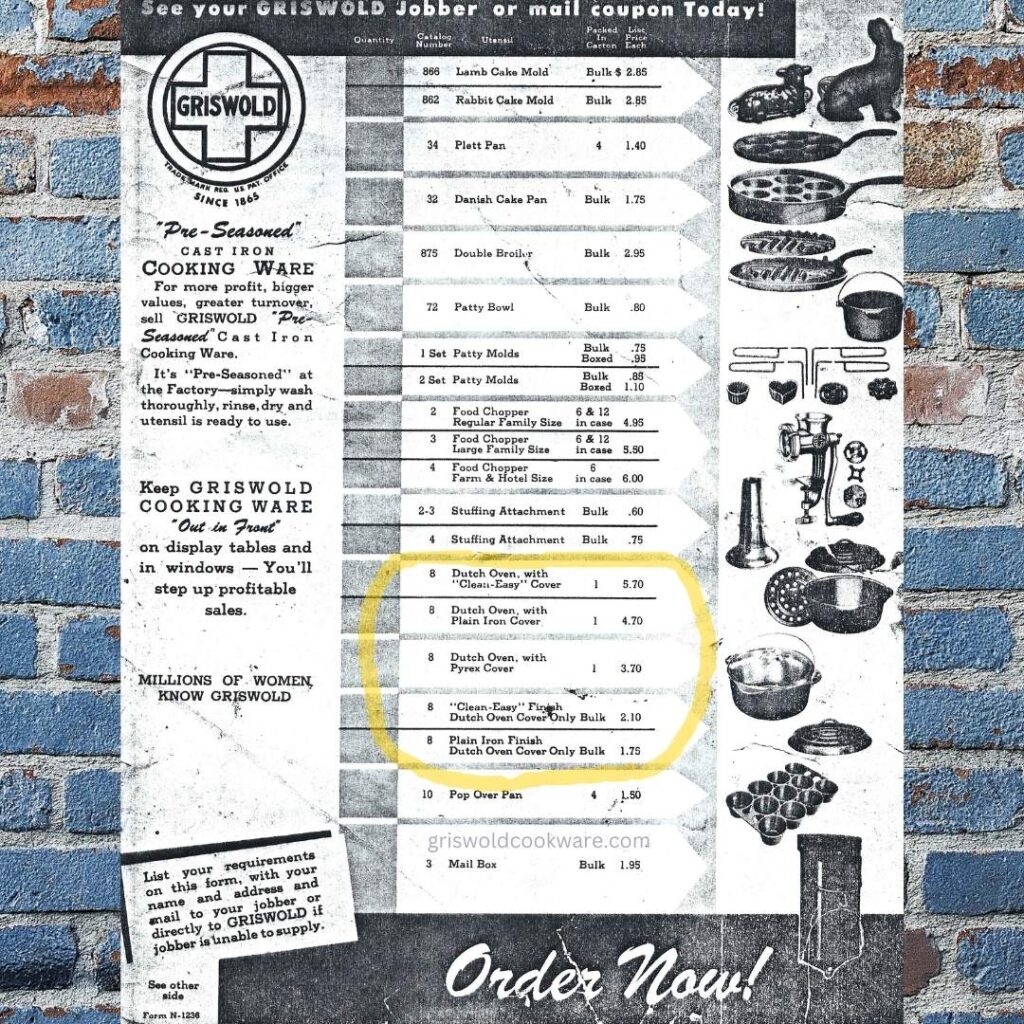
In addition to the black iron Dutch ovens, the clean-easy cover was also offered on the “Silverlike” Dutch oven.
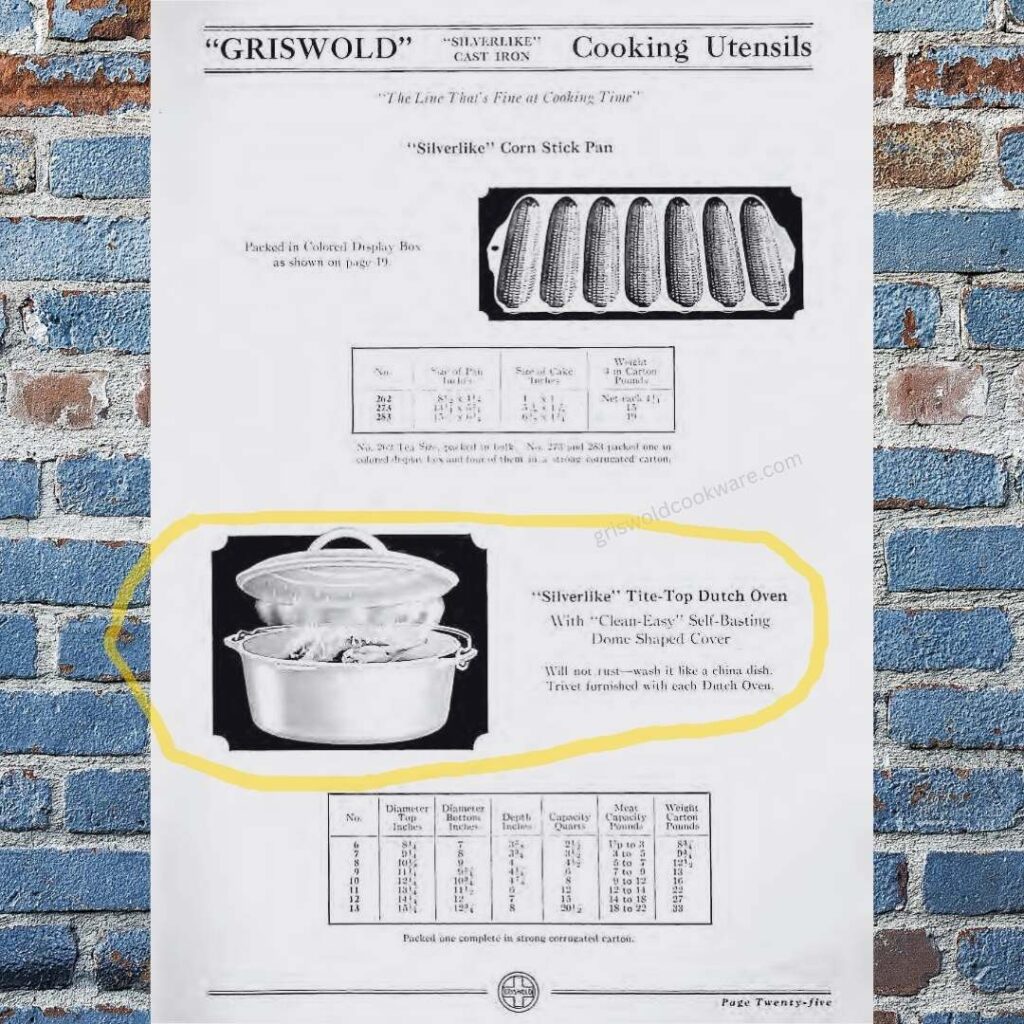
Now, when you see an unusual enamel-like coating on the underside of a vintage Griswold Dutch oven, you’ll know what it is!

